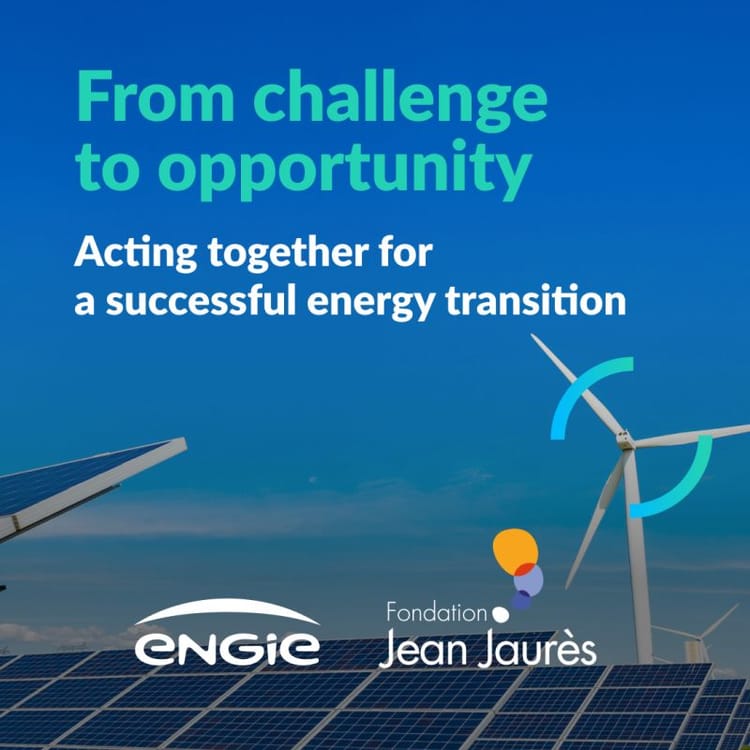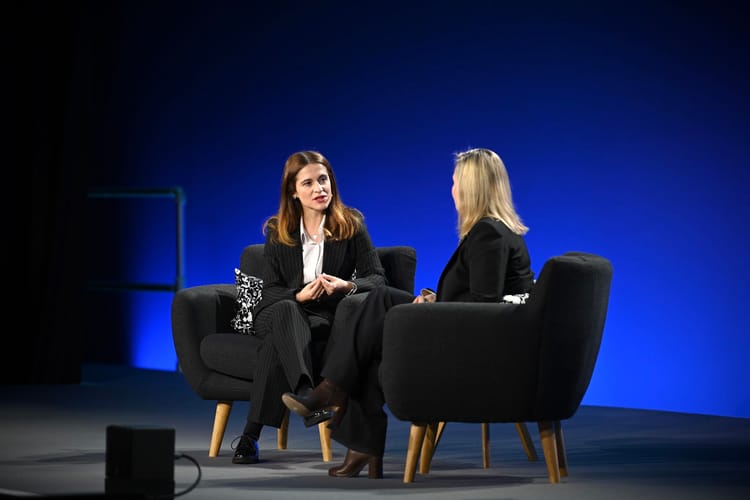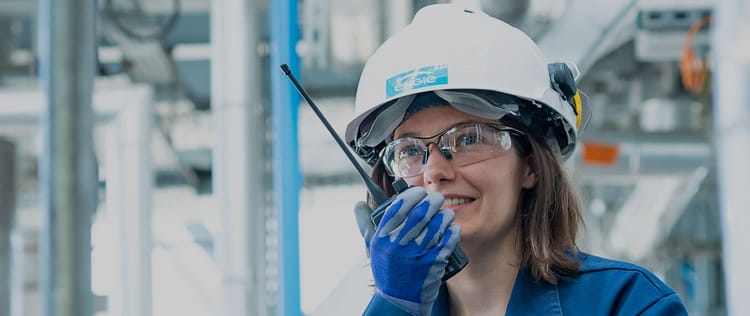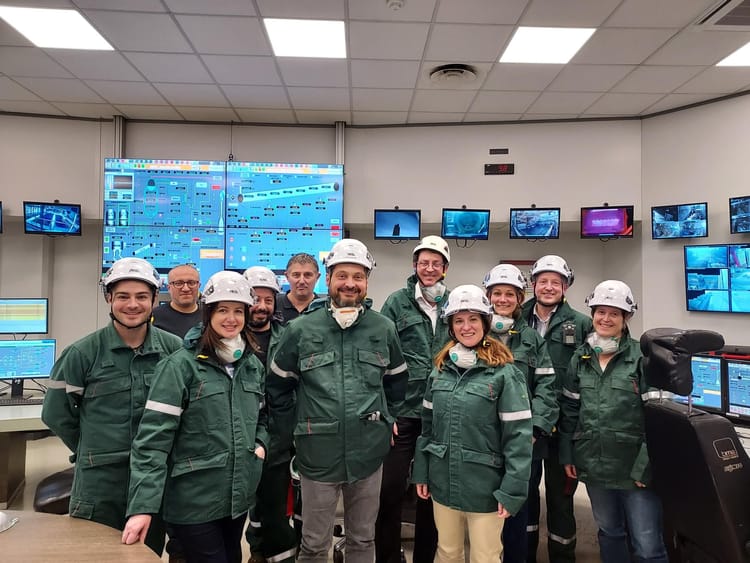'No greener world without digital'

Digital has profoundly changed how we live our lives. It has influenced every aspect of it, from how we socially interact and find our romantic partners, to how we learn, pay our bills or shop for groceries, without leaving the comfort of our homes. I grew up in the 80's and had a vastly different childhood to what my children have today. I would spend most of my time outside, playing with friends, knocking on their doors to invite them out. My children today have play dates, organized by parents through chat groups. When I saw my youngest child trying to change the TV program by swiping the screen with his little finger, I realized how different his references are from those I had at his age.
Digital has significantly changed our professional lives too. Our knowledge workers have moved away from working 9 to 5 in the office to working at any place, any time and from any device. The boundaries between our personal and work time have blurred, as we are always connected and just one click away. This trend has further accelerated during the COVID19 pandemic, with remote work and videoconferencing becoming the norm.
However, not everything around us is changing at the same pace. In most large companies born before the Digital Age, many business processes have remained quite similar to those of 10 or 15 years ago. For decades, those companies have implemented processes and working methods that were considered efficient, and today they are trying to adapt to the very rapid pace of change imposed by the digitalization of everything around us.
I have a strong conviction that in the years to come, every non-digital-native company must transform itself to become truly digital, in order to thrive and eventually to survive.
It is more than a question of performance or of image, it has become a question of organizational life and death.
At the same time as the Digital Transformation challenge, we are facing another challenge, much more universal and immensely bigger. The biggest challenge in the history of humanity.
I am referring, of course, to climate change. We are witnessing drastic changes in our immediate environment, from 22 degrees in Paris in early November, to catastrophic floods and forest fires across the world. The pressure is building up, as the time to act is running out. To deal with this, companies are building zero-carbon coalitions, employing Sustainability Officers, and publishing their long term decarbonization targets.
For us in ENGIE, all our 100,000 employees, from Brazil to France to Australia, are committed to accelerating the transition to a net-zero-carbon world. Our ambition is to be net zero carbon on scopes 1, 2 and 3 by 2045, and to reduce the carbon footprint of our customers by 45 MtCO2eq by 2030. That is twice the carbon footprint of a country like Belgium! Many companies are doing similar things, you might say. But, what is differentiating about ENGIE’s journey is the timing, as ENGIE started its decarbonization journey several years ago, before most other global companies in the Energy sector. ENGIE has made bold choices since 2016 by exiting oil and gas exploration and production, by divesting coal assets and by focusing its strategy and growth levers on renewable energies. For a gas company, these were pioneering decisions that prove today the importance that ENGIE gives to environmental issues, and the sincerity of its commitment.
Bringing back the focus to these two challenges, digital transformation and carbon neutrality - they are immense, but so exciting! Personally, I could not dream of a better moment to join ENGIE and of a better job within than to be at the center of these challenges. I have an opportunity to combine my two passions: Digital and Sustainability. The two are intimately linked and their combination opens an extraordinary field of possibilities.
Our energy system is changing with the move towards sustainable, green energy. It is becoming more decentralized and localized, with a mix of renewable energies, intermittent by their nature.
The complexity of the new energy system creates space for digital to be a key enabler for the energy transition.
As an example, it can help predict availability and production levels of our solar farms and wind parks and reduce maintenance costs and unplanned downtime. With the increasing number of small energy players, like households with solar panels, a robust and real-time energy management system is required. Technologies like blockchain can help us to transparently track sources and consumption of energy.
At ENGIE, we also invest in the development of Digital Platforms to help our partners and customers, residential and industrial, to reduce their carbon footprint. In B2C, we address individual customers, like you and me, by creating digital solutions that allow customers to monitor their energy consumption and help them reduce it. They can understand how they consume energy, compare themselves to other households, identify actions to reduce consumption and identify sources of savings. These tools are becoming more relevant than ever in the context of the geopolitical crisis in Europe, forcing us all to change our behavior very quickly and adopt energy sobriety measures.
In B2B, we act to support industrial companies in their energy transition, not only through the green energy we provide, but also through digital solutions. It is worth noting that 85% of companies have set strong decarbonization ambitions, but only 25% have a concrete plan to achieve those targets, and only 7% of the worlds's largest firms are on track to achieve net zero emissions for Scope 1 and 2 (based on a study released during the COP27). There is no shortage of good intentions, but we still need to find the means to turn them into measurable reality. This is where ENGIE's digital platforms come in. Because we have decades of expertise in energy management and the related data, we can accurately assess our customers' carbon footprints. We are working with customers to develop decarbonization scenarios, build action plans with precise projections of the effects of these actions over 10, 20 or 30 years, and support them with consultancy in achieving their goals.
Additionally, we have city-scale solutions that collect and store data from wind, solar, hydro or biogas installations in real time, as well as third-party data such as weather forecasts. Thanks to a digital twin of the city, diverse options and scenarios can be tested. The impacts of potential decisions can be simulated to make the best choices, combining the ecological impact, the economic constraints, and the well-being of the citizens.
As sustainability is in our DNA and is a daily concern in all our activities, for me it must mean the sustainability of Digital as well. Why should we be concerned about the carbon footprint of Digital itself? Because it has its own emissions linked to hardware and its manufacturing, storage, networks, etc. Today, the carbon footprint of the digital industry is estimated at between 2% and 4% of all emissions. But with the evolution of the uses and the omnipresence in our lives, the carbon footprint of Digital increases around 10% every year.
Since 2020, ENGIE has been working to measure the carbon footprint of scopes 1, 2 and 3 of its IT and Digital activities. We have realized that more than 2/3 of this carbon footprint comes from the hardware, the manufacturing process of the equipment we use and the network components. Hardware is responsible for 89% of the emissions of a PC and 75% of those of a LAN. We have therefore decided to extend the lifetime of our hardware and make our employees aware of its environmental impact. We have also succeeded in dividing our infrastructure footprint by 5, mostly thanks to the adoption of the Cloud, an area in which ENGIE is ahead of most companies of equivalent size. Moreover, as we are not the sole developer of our digital services and as we work with many partners and service providers, we have included clauses in all our calls for tender and our contracts to commit them too to the path of carbon neutrality.
So, what is next for us?
We will continue to innovate and invest in digital solutions and platforms that help us and our customers to act to accelerate the transition towards a carbon-neutral economy.
It is great to see the benefits of our strong focus on digital in recent years. Our challenge today is to further work on the industrialization of these platforms, scaling them up and continuing to innovate and explore disruptive technologies. In parallel we will continue to address the carbon footprint of digital itself. We can, of course, not do this alone. We will continue to work with the best and brightest people and organizations as we accelerate our journey.
Our Digital & IT function, long considered a ‘support function’, is now at the heart of realizing ENGIE's strategy.
Driven by our essential purpose and impact we can make, my colleagues and I can wake up in the morning telling ourselves, ‘Today, I'm going to help to build a better world for my children, one day at a time!’




